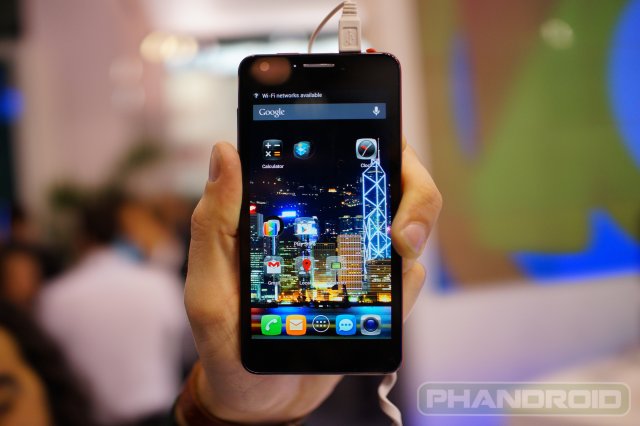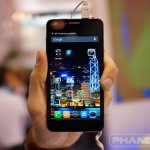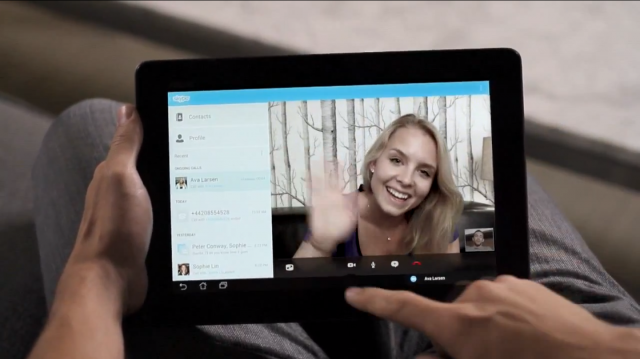Android Authority |
- Could Android 5.0 Key Lime Pie be based on Linux 3.8 kernel?
- LG Optimus F5 MWC hands-on preview [video]
- LG Optimus L7 II first look and hands-on preview [video]
- Smartphones are ‘emasculating’ unlike Google Glass, Sergey Brin says
- Falcon Pro deals with token limit woe, goes back on sale for $1.9
- Can Google be hacked?
- MWC 2013: Samsung Galaxy Xcover 2 hands-on preview [video]
- Samsung Galaxy Grand Duos Review! [video]
- LG Optimus F7 hands-on preview [video]
- HTC One to sell as TD 101 via China Mobile, LG Optimus Vu 2 Plus also spotted
| Could Android 5.0 Key Lime Pie be based on Linux 3.8 kernel? Posted: 28 Feb 2013 02:06 AM PST
Google is apparently working on the recently released Linux 3.8 kernel, a new report reveals, and we're certainly going to wonder whether Android 5.0 Key Lime Pie will be based on the new kernel. Phoronix speculates that it may be too early to release a Key Lime Pie OS based on Linux 3.8 given that Android 5.0 is expected to be unveiled in less than three months from now, at Google's 2013 I/O event. But while "the work is labeled as 'experimental,'" it seems "to be evolving fast," which sounds interesting, although we have no way of confirming what Key Lime Pie will be based on at this time. Jelly Bean is based on Linux 3.0 kernel, with Google also maintaining other versions including 3.3 and 3.4, with Android 4.2.2 for Nexus 4 based on the latter. The same source details some of the improvements in Linux 3.8 kernel (see second Source link below) including "Samsung Exynos DRM advancements," open-source NVIDIA Tegra driver inclusion and lowered RAM usage. We'll keep our ears to the ground on this one, as we're getting ready for Google's next Android OS launch. Meanwhile, those of you interested in this experimental/android-3.8 repository can already check it out. The post Could Android 5.0 Key Lime Pie be based on Linux 3.8 kernel? appeared first on Android Authority. |
| LG Optimus F5 MWC hands-on preview [video] Posted: 28 Feb 2013 02:04 AM PST
With one foot on the plane home, our own Joshua Vergara is putting his finishing touches on the most epic MWC 2013 coverage on the web with a hands-on video preview of the LG Optimus F5. The F5 is not to be mistaken with its bigger brother, the F7, or with its distant cousins in the L II clan, the L3, L5 and L7 II. Confusing stuff, we know, but bear with us for a second, will you? In a nutshell, the F5 is higher on the food chain than all the L II family members while lower than the F7. However, you can say the F5 and the L7 II kind of complement one another, with each of the two shining in departments the other doesn't. Whereas the L7 II impresses with an 8 MP rear-facing shooter and a large 2,460 mAh battery, the F5 rocks a superior 960 x 540 pixels resolution panel, a dual-core 1.2 GHz CPU, 1 GB of RAM and 8 GB of internal storage space. F5's camera is far from special, with a 5 MP sensor, no flash or autofocus, while the 2,150 mAh battery is kind of measly. Android 4.1 Jelly Bean butters up both the L7 II and F5 and build quality is also very similar. That said, we think LG can find sufficiently juicy pieces of the pie for both phones, provided they'll know how to hit the pricing sweet spot. No words on that for the F5 yet, but we're expecting to hear something in the next couple of weeks. For now, check out our exclusive first look video clip from Barcelona’s MWC below and tell us what are your first impressions of the device. We know it’s not spectacular, but is it good-looking and snappy enough to be worth, say, $400? The post LG Optimus F5 MWC hands-on preview [video] appeared first on Android Authority. |
| LG Optimus L7 II first look and hands-on preview [video] Posted: 28 Feb 2013 01:35 AM PST
We're just about ready to wrap up our epic coverage of what's definitely been an un-epic MWC 2013, but not before offering you a couple of extra hands-on video previews from Barcelona. We've taken quick looks at the LG Optimus G Pro, Samsung Galaxy Note 8, Asus Padfone Infinity, HP Slate 7, Asus Fonepad, Sony Xperia Tablet Z, ZTE Grand Memo, Huawei Ascend P2, LG Optimus F7 and Samsung Galaxy Xcover 2 so far, but we're not done yet. What, you thought our "Eat, Sleep, Android" motto was a joke? It's not! And to prove it, we've even taken the LG Optimus L7 II for a spin. The 4.3-incher is the top dog of the new L family, but unfortunately its spec sheet is mostly bittersweet, with an emphasis on the bitter part. What can we say about the 800 x 480 pix res display, dual-core 1 GHz S4 Play processor, 768 MB of RAM and 4 GB of on-board storage other than they're the mid-range features of the past? Thankfully, the 8 MP rear-facing cam, on-board Android 4.1 Jelly Bean and 2,460 mAh battery balance things a bit, making the L7 II not that bad on the whole. Quite surprising, the build quality is described as nice by my colleague and pal Joshua Vergara in the below video from MWC. The phone is not too chunky either, while the bezel is thin… for a budget device. And if we add in the equation the rumored $300-$350 European price (off-contract), we think we're starting to understand LG's marketing strategy. At least as far as this fellow goes, because the L3 II and L5 II are still rather puzzling. Expect the L7 II in stores as soon as next week, and, in the meantime, lend us your eyes and let us take you on a virtual tour of a mid-tier phone with a shot at glory. The post LG Optimus L7 II first look and hands-on preview [video] appeared first on Android Authority. |
| Smartphones are ‘emasculating’ unlike Google Glass, Sergey Brin says Posted: 28 Feb 2013 01:28 AM PST  Sergey Brin demonstrates Google Glass You know that little emergency switch inside your had that tells you not to say out loud everything you're thinking about? Google's co-founder and fervent Google Glass fan Sergey Brin doesn't have one. Speaking on Wednesday at a TED event in California, he must have gotten carried away with the excitment around Google Glass and forgot that Android and Android smartphones help Google bring in a small fortune from mobile ads each year, estimated to have topped $8 billion for 2012 alone and expected to continue its growth as long as Android is the king of mobile devices when it comes to market share. During his speech, while obviously trying to explain why Google Glass is a cool project and to convince people that it's worth investing in such a device, he went on and called smartphones "emasculating." All of them, without making any differences between Android and others at the time, not that it would have been any better to call everyone else’s phone’s emasculating than those running Google’s OS:
I'm sure plenty of smartphone makers and users would disagree with such affirmations, not to mention some of Google's own employees working hard to deliver new Android features.
Not to mention that Google Glass hardware, while minimal, isn’t exactly that better looking either. Sure, it's understandable that Google wants to sell lots of Google Glass units in the coming years, but that's not exactly the right way to do it, especially when the price of said smart glasses is around $1,500. Brin did say it's going to be lower than that when the device is available to consumers, but didn't actually say how much it will cost. And sure, he may have wanted to explain that smartphone usage is unacceptable in certain social instances and that we may be too absorbed by our phones’ screens instead of actually interacting with the people in front of us, but that's not what came out when. How do you feel about your handset, Android fans? Is it emasculating? The post Smartphones are 'emasculating' unlike Google Glass, Sergey Brin says appeared first on Android Authority. |
| Falcon Pro deals with token limit woe, goes back on sale for $1.9 Posted: 28 Feb 2013 12:32 AM PST
Good news, Twitter addicts! You can now grab the popular Falcon Pro app, one of the better Twitter client apps in the market, at a non-outrageous price of a little less than $2. If you've been following the story, you probably know that Joaquim Vergès recently increased the price of Falcon Pro to $132.13 to deter new users from purchasing it, a move that the developer had to make after the app reached Twitter's token limit of 100,000 users. So, has Twitter extended the token limit for Falcon Pro then? Not quite. Joaquim has merely released a new version of the app that resets the Twitter ID tokens. The idea is to filter out those who barely use Falcon Pro, which means existing customers will have to re-log in, while allowing new ones to get in on the action as well. There's no telling when the token will last this time around. If you don't mind the slightly higher pricing, a dollar more expensive than its original price tag, hit the link below to purchase the app. Don’t forget to check out our Falcon Pro app review. The post Falcon Pro deals with token limit woe, goes back on sale for $1.9 appeared first on Android Authority. |
| Posted: 28 Feb 2013 12:31 AM PST
Twitter, Facebook, Microsoft. Three major tech companies, all hacked in the past few weeks… but they're not alone. Who is responsible? Why did they do it? We may never learn the answer to those questions, but it leads us to wonder if our dear Google is susceptible to attack. The mighty "G" has plenty of security protocols in place, but are they enough? We should all be concerned with the security of our data, so let's find out just how much we need to concern ourselves regarding the information we store on Google's servers.
Who did what to whom?In situations like this, we are only given enough info to scare us a bit. Buzzwords like "compromised information" or "accounts hacked" are thrown about, but we rarely gain insight into the how and why. This secrecy is another measure of security, as letting us know how it was done only invites more hacking. There is, however, one singular thread running through all this fabric of recent hacking activity. When 250,000 user accounts are compromised, people take notice. When a company can't reveal information to put minds at ease, people worry. Via a blog post, we learned that Twitter responded within hours, going on to say that they were not the only ones compromised by hacking. While no direct flaw was identified, Twitter seemed keen to mention Java again and again, pointing to a Department of Homeland Security warning about Java. Another recent target for hackers was Facebook, which came forward to acknowledge being hacked after Twitter, though their attack happened a month prior. Facebook claimed "no evidence that Facebook user data was compromised" while also pointing out that they were breached through a security vulnerability in Java. We're starting to see a trend, here. MicrosoftMaybe the most tight-lipped of the three, Microsoft would only say they experienced a similar hacking instance. They would go on to say that some computers were "infected by malicious software using techniques similar to those documented by similar organizations." Microsoft also claimed that no user data was compromised. That's three big tech companies, and one Java mess. The othersApple, The New York Times, The Wall Street Journal, The Washington Post. All allegedly hacked, and all allude to Java as the issue. That Department of Defense vulnerability note mentioned earlier notes the following:
The report goes on to point out that the security manager in Java has a flaw which allows a security exception, allowing malicious users and software. This would then allow unprivileged Java code to access restricted classes. Let's also be clear that this security flaw affects the machine, not the entire network, per se.
Are we all at risk?To determine the answer, let's first define what "security" and "risk" are. If you have access to high-value information, you are at risk. When we hear things like a quarter million Twitter accounts have been compromised, that's probably due to a "smash and grab" job by hackers more than the information of 250,000 people being targetted. They get everything they can before they're locked out, which leads to a high number of "compromised" accounts. In a broader sense, we're all at risk. If a hacker wants information, they'll find a way to get it. Security is a bit more difficult to define. While it's clear that Java is an issue, it can be turned off. Does that suddenly make your machine secure? It relieves the Java threat, but that doesn’t mean you’ve suddenly become secure. Apple has disabled Java by default in their products, so we're wise to take the Java security issues seriously. It may not be the silver bullet, but recent events suggest disabling Java is a solid option until there is a satisfying fix for that issue.
Is Google doing enough?Chrome, and by virtue Chrome OS, were built from the ground up to be secure. The main focus for security is what Google likes to refer to as "sandboxing". In a nutshell, this means all of your actions are separate actions, and carried out as such. This prevents any widespread malice, and Chrome is built to shut down and threatening action once its been identified. Much of what we do in Chrome involves an extension, in one form or another. How is security accomplished with so many extensions flying around? From the Google Chromium Blog:
To achieve privilege separation, each extension is divided into two pieces, a background page andcontent scripts. The background page has the lion’s share of the extensions privileges but is isolated from direct contact with web pages. Content scripts can interact directly with web pages but are granted few additional privileges. Of course, the two can communicate, but dividing extensions into these components means a vulnerability in a content script does not necessarily leak all the extension’s privileges to the attacker. To better illustrate the benefits of sandboxing, here's a video Google made: Should we worry? If you have sensitive information that may be of some value, yes… you should worry. If someone wants what you have so bad they're willing to steal it, then you are at risk. Whether you have the information yourself, of the access to it, you are a security risk and a target for compromise. Securing information is not an easy task, and there are just as many people trying to get it as there are trying to secure it. Hacks and security breaches occur constantly, and we may never even know it. A good example of that is Microsoft's blog post regarding their security breach, which noted "Consistent with our security response practices, we chose not to make a statement during the initial information gathering process." We can surmise from that statement that security issues happen regularly, and it's not necessary to report each one. That also suggests that not all security concerns are these massive attacks with compromised information. This leads us to wonder about any large-scale Google security compromises. Does that mean they didn't happen, or just weren't discussed?
ConclusionYour information is vulnerable to a hacker, but probably not via Google. Security was and is one of the core concepts of Chrome, be it browser or OS. Will that change over time? Absolutely. As something becomes more widely used, it becomes a target. While utilizing a sandboxing feature is a great move, it relies a bit on the honor system. Google trusts developers to create safe web apps and extensions, not malicious software designed to permeate the sandbox walls. So far, so good… but that tide can change quickly, so Google will have to change with it. Services like Google+ haven't had the issues that Twitter or Facebook have had, so Google is doing something (or many things) better than their competition. As users, we can't control hackers. They'll keep trying to get whatever info they're going after, and all those bright security experts will try to stop them. All we can do is be smart about what we do and how we do it. Our job is to browse the web wisely, and download apps from reliable sources. We may not be able to stop the security issues, but we can all do our part to mitigate them. The post Can Google be hacked? appeared first on Android Authority. |
| MWC 2013: Samsung Galaxy Xcover 2 hands-on preview [video] Posted: 27 Feb 2013 10:55 PM PST
We first saw a glimpse of the Samsung Galaxy Xcover 2 in mid-January, with an official announcement following shortly thereafter. While all eyes are probably on the Galaxy Note 8.0 here at MWC 2013, we haven't forgotten about Samsung's latest entry in the rugged smartphone market. As is usually the case, you won't find this type of phone packing the latest and greatest in specs. The Xcover 2 only sports a 4-inch display with 800 x 480 resolution, while powering the handset is a dual-core 1GHZ Cortex A9 processor. The rest of the features include 1GB of RAM, 4GB internal storage with microSD support, 5MP main camera, VGA front cam, 1,700mAh battery, HSDPA/HSUPA, and Android 4.1 Jelly Bean. As to what makes the Galaxy Xcover 2 the perfect companion for the outdoorsy type, the phone is both dust- and water-proof (IP67 certification), and, thanks to its thick shell, it can survive the harshest of terrains and withstand some general abuses. Wondering how the device looks like in the flesh? Check out our hands-on preview of the Galaxy Xcover 2 below. The Samsung Galaxy Xcover 2 will hit some markets in March at a yet-to-be-disclosed price. The post MWC 2013: Samsung Galaxy Xcover 2 hands-on preview [video] appeared first on Android Authority. |
| Samsung Galaxy Grand Duos Review! [video] Posted: 27 Feb 2013 09:03 PM PST
While they aren’t popular everywhere, dual-SIM phones are handy for some people and downright necessary for others. The problem is, most of them are very utilitarian. When they’re not busy rolling in the piles of money they pull in from sales of their flagship devices, Samsung is one of the few big players cranking out Android-powered dual-SIM phones. Among the latest of these is the Samsung Galaxy Grand Duos. In a hurry? Check out our video review below, or jump to the conclusion at the very end of the article. Specs
First Impressions
Why does that Galaxy Note 2 look so small? Why does that Galaxy S3 look so big? Yeah, that’s about it. It seems that Samsung has made a concerted effort lately to bring a unified design to most of their devices, and the Galaxy Grand Duos definitely fits into this category. Build Quality & DesignThe build quality of the Samsung Galaxy Grand Duos is sturdy, if a little flexy. This seems to be present in most Samsung phones currently on the market, and generally, that’s the price you pay for some of the lightest devices around. Still, the Grand Duos doesn’t feel in danger of breaking any time soon, and the few physical buttons on the phone feel solid.
As mentioned above, the Grand Duos is very reminiscent of both the Galaxy Note 2 and the Galaxy S3, though it is both heavier and slightly thicker than both of the aforementioned devices. Generally, if you like the style of Samsung’s recent flagships, you’ll be pleased with the look of the Galaxy Grand Duos. DisplayWhile the size of the Galaxy Grand Duos is on the large side, this does allow room for the 5-inch screen. There’s only one problem. That isn’t a typo up in the specs section. The resolution of that screen really is 480 x 800.
This is without a doubt the weakest aspect of this phone. Yes, you get used to it–after all, remember it wasn’t that long ago that screens with this resolution were the norm–but with a 5-inch display, it’s really hard not to think about what could have been. For the most part, things still look decent, but icons are on the large side, and there is most definitely noticeable pixelation. PerformanceThere is one aspect where that low resolution comes in handy: performance. As the Broadcom chipset inside the Galaxy Grand Duos doesn’t have to push that many pixels, performance is definitely better than expected. This isn’t going to run circles among the phones currently being shown off at Mobile World Congress, but it is definitely quite usable.
Apps launch very quickly, and no lag is usually noticeable when scrolling through homescreens or the app drawer. We tested a few games like Temple Run 2 and Shadowgun: Dead Zone and were impressed with how well they ran. AnTuTu benchmarks were, well, unreliable. We saw scores ranging from the low 6,000 range to the mid 8,000 range, with no particular apparent rhyme or reason for the disparity in the scores. When averaged out and rounded, we ended up with an aggregate score of around 7,500. SoftwareThe Samsung Galaxy Grand Duos runs Android 4.1.2 Jelly Bean which is, of course, skinned with Samsung’s own TouchWiz UI. In a somewhat strange addition, the split-screen feature originally found on the Galaxy Note 2 is built into the Grand Duos. While this isn’t quite as useful with no S Pen, it’s sure to be a welcome addition for some, and if you don’t like it, it’s easy to never use it.
Alongside Google apps, the usual suite of applicable “S” apps are included: S Memo, S Planner, S Suggest and S Voice. Among the other included apps are AllShare Play, ChatOn, GameHub and an FM Radio app. As usual, these can’t be uninstalled. CameraWhile it isn’t up to the standards set by the cameras in Samsung’s higher-end devices, the rear camera found in the Galaxy Grand Duos is still quite capable. Color reproduction was good, and photos looked sharp as long as care was taken when shooting them. The only area we found lacking was low-light performance, which is fairly common in smartphone cameras.
Both the front and rear cameras are capable of video capture, though while the rear camera records 1080p video at 30fps, the front-facing camera only records 480p. The video was shot was fairly smooth, though the same low-light performance issue was present, resulting in some visible noise in darker areas of the video. BatteryYou might think that with fairly modest specs and a comparatively low resolution screen to drive that the 2,100 mAh battery in the Samsung Galaxy Grand Duos would last quite a while, but we didn’t find this to be the case. Granted, the stresses put on a phone during testing are often greater than what it sees in daily use, but we were still disappointed with the roughly 6:30 of battery life that we got.
With two SIMs inserts into their respective slots, you will have more battery drain just staying connected than usual, so even with light use, you might find yourself running low on battery faster than you would like. On the up side, the battery can be removed and replaced, which is always nice to see. Video ReviewConclusionWhether or not this phone is a good choice for you obviously rests on if you need dual SIMs or not. If you’re never going to use that second SIM slot, there are plenty of better choices available. If you travel frequently or live in an area where dual SIMs are necessary, the Galaxy Grand Duos is one of the best dual-SIM solutions on the market right now. Are you a user of dual-SIM phones? What do you think of the Samsung Galaxy Grand Duos? Let us know in the comments below. The post Samsung Galaxy Grand Duos Review! [video] appeared first on Android Authority. |
| LG Optimus F7 hands-on preview [video] Posted: 27 Feb 2013 08:51 PM PST
A week before the start of the Mobile World Congress 2013, we found out that LG was prepping a brand new series to accompany its acclaimed Optimus L smartphones, which have been helping LG racking up some impressive sales. Dubbed as the LG Optimus F5 and Optimus F7, the two phones pack good enough specs to place them right in the middle of the mid-range and high-end segment, though we'll have to see some pricing details first before we can predict big things for them. If you're particularly interested in seeing more of the Optimus F7, we've got just the goods to get you pumped up, as our very own Joshua Vergara has captured his Optimus F7 hands-on experience on video for your viewing pleasure. Just to recap, the Optimus F7 boasts a 4.7-inch True HD IPS display, a dual-core 1.5GHz Snapdragon S4 processor, 2GB of RAM, 8GB internal storage with microSD support, 8MP rear camera, 1.2MP front-facing cam, a healthy 2,540mAH battery, and Android 4.1. Jelly Bean. As Josh said, the LG Optimus F7 should make a great purchase for folks who don't necessarily need a super high-end phone. Enjoy the video and let us know how you like the F7 in the comments below. The post LG Optimus F7 hands-on preview [video] appeared first on Android Authority. |
| HTC One to sell as TD 101 via China Mobile, LG Optimus Vu 2 Plus also spotted Posted: 27 Feb 2013 06:57 PM PST Many words have been written on HTC's mistakes that lead to its current troubles in the mobile business, with one of them being the lack of strong Galaxy-style brand that consumers would grow to love. So much for creating a strong brand!HTC decided to invest in such a brand by launching the One series of smartphones last year, although the company was not able to impose its own product names to certain carriers. Then, just a few days ago, the company launched the HTC One, which is going to be the company's only One-branded handset this year, a make-or-break kind of project for the Taiwanese Android maker that’s still having a tough time fighting against the competition, especially Samsung. We were under the impression that HTC will further invest in its One brand and not budge to carrier demands anymore when it comes to changing the name of the product – in the U.S., AT&T, Sprint and T-Mobile are going to sell it as the HTC One. But it looks like things aren't necessarily so, and no, it's not Verizon that's going to get its way selling the One as the Droid DNA Plus, as it was recently rumored. We're looking at China Mobile this time around, which has announced the HTC One as the HTC TD 101. That's certainly an ugly name and won't do HTC much good especially considering that China Mobile is the largest carrier in the world, and therefore plenty of potential buyers will be looking at the TD 101 instead of One in marketing materials. Furthermore, this particular One version will feature a regular-pixel 8-megapixel shooter, so no UltraPixels for this device. So much for creating a strong HTC One brand! Availability details for the HTC TD 101 have not been made public yet during China Mobile's MWC 2013 presentation, although from the looks of that slide we could assume that China Mobile subscribers will get the device at some point in July. LG Optimus Vu 2 Plus spottedIn addition to the TD 101, China Mobile will have other TD-LTE smartphones in stores this year, like the LG Optimus Vu 2 Plus, a 5-inch handset that will pack a 1.5GHz quad-core "next-generation" processor, a 13-megapixel "advanced" camera and a 2540mAh battery.
The slide above seems to suggest that the Optimus Vu 2 Plus will hit China Mobile in August, but we still need official launch confirmations. In case you’re interested in more TD-LTE devices, you’ll have to know that in 2013 China Mobile will also sell other TD-LTE devices including the Huawei Ascend D2-TL, the ZTE U9810 and a garden variety of mobile hotspots. The post HTC One to sell as TD 101 via China Mobile, LG Optimus Vu 2 Plus also spotted appeared first on Android Authority. |
| You are subscribed to email updates from Android Authority To stop receiving these emails, you may unsubscribe now. | Email delivery powered by Google |
| Google Inc., 20 West Kinzie, Chicago IL USA 60610 | |












![samsung-galaxy-grand-duos-with-box-[aa]](http://cdn01.androidauthority.net/wp-content/uploads/2013/02/samsung-galaxy-grand-duos-with-box-aa.jpg)
![samsung-galaxy-grand-duos-back-[aa]](http://cdn03.androidauthority.net/wp-content/uploads/2013/02/samsung-galaxy-grand-duos-back-aa.jpg)
![samsung-galaxy-grand-duos-in-hand-2-[aa]](http://cdn01.androidauthority.net/wp-content/uploads/2013/02/samsung-galaxy-grand-duos-in-hand-2-aa.jpg)
![samsung-galaxy-grand-duos-right-front-[aa]](http://cdn04.androidauthority.net/wp-content/uploads/2013/02/samsung-galaxy-grand-duos-right-front-aa.jpg)
![samsung-galaxy-grand-duos-left-front-[aa]](http://cdn04.androidauthority.net/wp-content/uploads/2013/02/samsung-galaxy-grand-duos-left-front-aa.jpg)
![samsung-galaxy-grand-duos-camera-[aa]](http://cdn02.androidauthority.net/wp-content/uploads/2013/02/samsung-galaxy-grand-duos-camera-aa.jpg)
![samsung-galaxy-grand-duos-in-hand-back-[aa]](http://cdn01.androidauthority.net/wp-content/uploads/2013/02/samsung-galaxy-grand-duos-in-hand-back-aa.jpg)






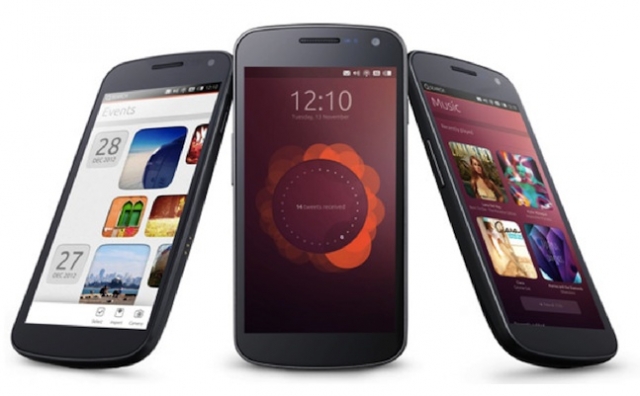
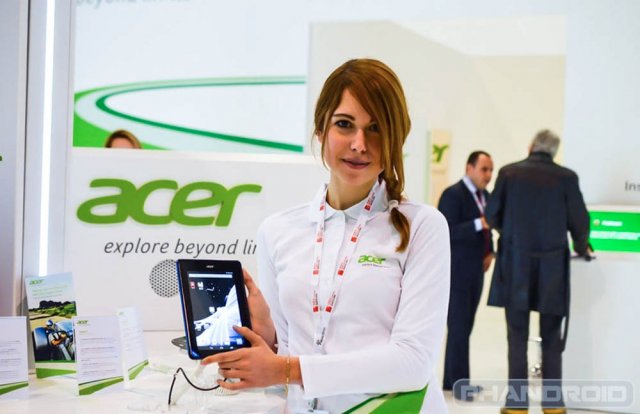


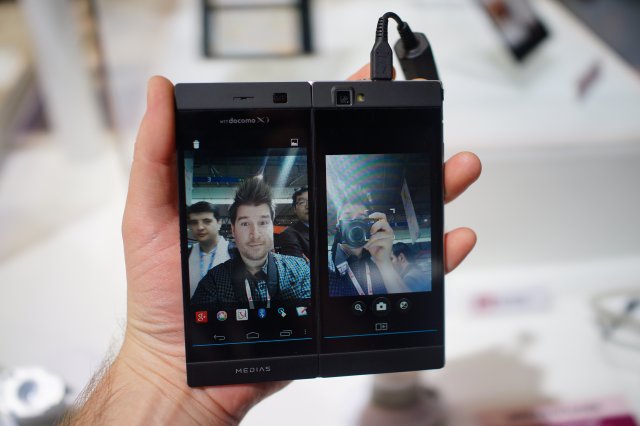
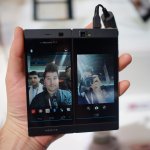
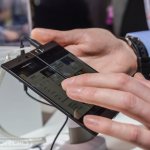

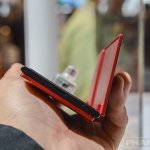
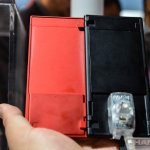
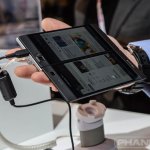
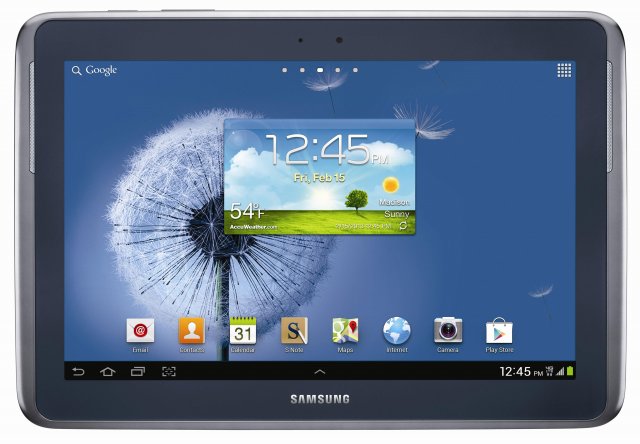

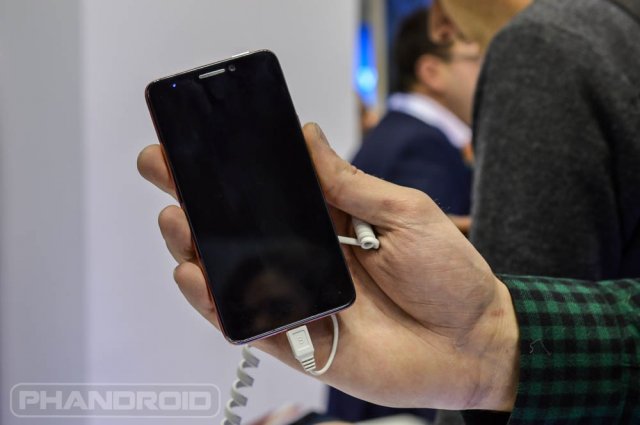

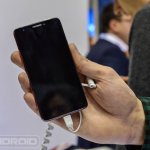
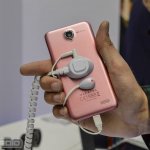

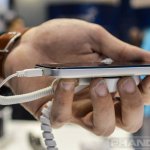
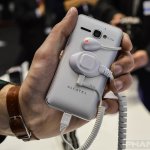
 In September of 2012, the
In September of 2012, the 
